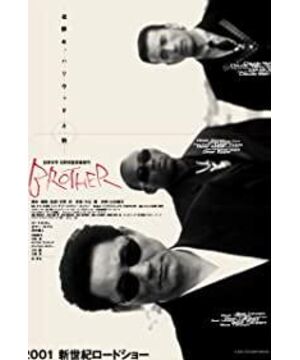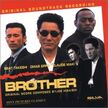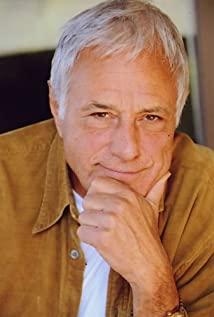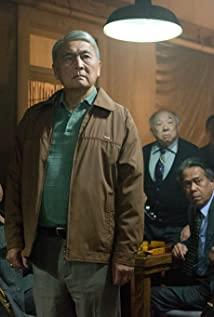Before the film presents the final effect, it has to go through many re-creations, from the creation of the story, to the director’s on-site directing, performance, setting, to the camera angle of view, editing, and music, and countless details are poured together. Take the final look. Ignoring the details will not hinder us from watching the whole work. However, does this work bring joy, humor, sadness, despair, or joking, indifference, in addition to the intuitive actor performance and music, every detail All have paid subtle psychological paving for our rich feelings. And these rich expression spaces make every subject matter can bring endless changes.
Kitano has his own unique director style. In the film, he often presents unexpected plot development, and in the process of story advancement, he also presents us a quiet story with a very calm perspective. He seemed to be stating a question to everyone, and the answer to the question was not known by himself. Therefore, he slowly talked and talked, trying to present us the full story as an outsider.
At the beginning of the film are two very playful shots: funny facial close-ups of facial muscle twitching (that is, the protagonist, the big brother named Yamamoto), and the panoramic view of the environment. In general movies, the special perspective of the lens is often to match the development of the plot to express the unbalanced state of affairs or the complex emotional state of the characters. At first, I also used this to understand this opening. However, if you have seen other Takeshi Kitano’s In the case of the film, it may not be too complicated to think about-the director is leading us into this story from a joking and playful perspective.
The director seems to have been narrating rebelliously about the protagonist's setting, constantly breaking the stereotyped positioning of the image of "big brother" in the audience's habitual perception-in the past gangster movies, such as Marlon Brando, In this way, in order to portray a leader, the directors often need to give him some special aura to support him, such as the character’s dress, posture, appearance environment, and supporting role attitude performance, which can help viewers quickly establish a right Recognition of role positioning. However, the director of this film put "Big Brother" in a weird environment from the beginning, or it can be said that the director deliberately shattered our cognition from the beginning.
"Asshole, doesn't even speak English" Oh my God, the eldest brother was scolded by a driver from the beginning. But because the older brother doesn't understand English, he doesn't have the reaction that older brother should have. (Later, the eldest brother gave the driver a tip of one hundred dollars. He thought that the market value of U.S. dollars and Japanese yen was about the same.)
At this time, with the taxi going away, the title of the film appeared.
One of the interesting aspects of the director's narrative is that he did not plan to tell the story of a thrilling underworld boss who made a comeback. He is more often presenting and analyzing from a third perspective.
This is the scene when the protagonist goes to defect to his younger brother.
The camera position was fixed at the beginning, and it did not move closer as the characters walked. In other words, the director did not use the camera to create a sense of suspense. On the contrary, he hoped that we would still focus on the small ones in this larger environment. The small protagonist, such a large panoramic composition makes the character appear in a state of isolation and helplessness.
There is no one in the door.
The eldest brother was very imposing, leaning on the railing and standing on his legs, and began to think.
From this, we can see the previous story.
The boss that the protagonist Yamamoto had followed before came to the bar to have fun during a critical period of fighting with another gang, and the assassin still appeared despite the bodyguards all around. Yamamoto keenly spotted the killer, and he was killed when he didn't even see Yamamoto's face. Seeing this, you will suddenly feel that this gangster movie is too calm and restrained. The killer died without even having a chance to pull out the gun, not to mention the shootout scene where you come and go. Moreover, even though Yamamoto had just dealt with the killer of the rival gang, the white-haired big brother was still killed.
In order for his brothers to survive, Harada, another leader of the gang, led his men to join the hostile gang. Because Yamamoto refused to join, Harada was asked by the new gang leader to dispose of him.
"Then kill me." Yamamoto handed him the pistol without hesitation. (Like the big brother's chivalry)
Harada did not do this.
Harada helps Yamamoto escape to the United States and finds a beggar, disguised as Yamamoto's corpse.
"Chopping hands, disfiguring, burning corpses", the director observes the scene with a calm fixed camera (the camera is slightly shaken) and a big scene. This sense of distance filters out the bloody and cruel reality for us, and at the same time can Still from the perspective of an outsider to examine the numbness and ruthlessness of the brothers' loyalty towards life.
When dealing with the character image, Kitano often likes to arrange a little interesting idea for the character suddenly to make the character look more cute. The bank card password Harada prepared for Yamamoto to escape to the United States was his birthday, because "he hopes you don't forget him."
Under the cold and hard male relationship, such sudden small details instantly set aside a large group of "behind-the-scenes stories" for us. It makes the cold and tough characters suddenly have body temperature at this time.
When the memory was over, Yamamoto saw his brother.
There is also an interesting shot here.
When Yamamoto’s younger brother introduced his brother to two friends, the director gave us Yamamoto’s first perspective. At this time, Yamamoto was not ready to face strangers and strange brothers, so he Keeping his head down, unilaterally listening to his younger brother's arrangements. This kind of lens allows us to experience Yamamoto's "sense of isolation" firsthand.
Another shot:
The younger brother took him to dinner. From this close-to-first-perspective image, it can be seen that the younger brother and his friends were squeezed in one seat, and Yamamoto was seated on the other side alone. When the younger brother's friend said that he was carrying Yamamoto on his back and was selling drugs in the United States, the younger brother stopped the friend from speaking and said, "He doesn't understand English anyway." This shot is almost from Yamamoto's perspective to observe the acquaintances and jokes of the three of them, once again isolating Yamamoto from the environment.
The younger brother was threatened by force in the drug trade, and Yamamoto beat him back mercilessly. Then, he was taken away alone. Here, the most exciting scene in the film appears. This may be what makes Kitano Takeshi most different from other gangster film directors. He is calm and restrained in the role of force. He does not pursue more lively scenes and rhythms.
The younger brother Kato who came to the United States to join him was mistaken for a killer. As soon as he walked in, he was knocked to the ground by Yamamoto. He said embarrassingly:
"In the United States, I am just like people."
Yamamoto and Kato were speaking on the rooftop, and Kato folds a paper airplane—the humanity and emotions of the underworld gangster are clearly revealed, and after a brief hover in the air, the airplane quickly falls into the dark. Is this a hint to the fate of the character?
Next, Yamamoto and Kato, like old dough sticks, took the group of friends and mixed with society.
In the film, the director deliberately paid too much attention to the little character "Kato". This scene does not seem to be of much significance-a scene of several people playing indoor basketball, and the camera is completely behind Kato. For the center, I went to shoot this funny indoor ball game.
Kato has been hovering on the edge of the field, yelling to pass the ball to him, but unfortunately no one passed the ball to him from beginning to end. In front of several other burly partners, Kato’s character appears small and funny-Kato is trying to blend in. He has learned the language here and adapted to use English to talk and express with others. However, in this long shot, his The inability to show up is undoubtedly.
Kato and Yamamoto are the only people here who have been in the underworld from beginning to end. He and Yamamoto have consistent experiences and identities. They have never been integrated here, and they have never been accepted.
Yamamoto and Kato are the same, hard and uncompromising. He was threatened three times in the film. The first time was in Japan, but in order not to cause trouble for his brother, he went to the United States. The second time was at his younger brother's home in the United States, where he was threatened by gunmen from alien gangs.
He said to the opposite Danny: "Shoot. Danny shoots."
Danny shot, but unfortunately he didn't have such good marksmanship, so the killer died and Yamamoto was shot. Yamamoto absolutely expected this result, but he insisted that Danny shoot. This is his hard and unwilling character.
Facing a small drug dealer who flees with his money, Kato is also the only one who can cut off the finger of a small drug dealer without hesitation and stick to the rules. His coldness is exactly the same as the way Yamamoto stabbed someone's eyes with a broken wine bottle. .
Such coldness and rigidity are their mutual trust and sustenance. Therefore, at the expense of his life, Kato brought a powerful friend to his elder brother Yamamoto-Hyose.
Until Kato put the gun that Hyakase handed him to his head, I thought he would use this gun to kill Hyakse and his subordinates instantly. This is undoubtedly a development trend that we are accustomed to, and at the same time our understanding of social chaos Let us also rationalize this approach, yes, he should be like this, how cool.
Kato did something cooler. He just shot the bullet on his head. Before he died, he smiled and said to Momose: "Brother, please give it to you." His piety is pure and unhesitating.
The entry of Hyakuze has attracted the long-standing fights and killings in gangster movies, because the large forbearance narrative in the front makes Hyakase's behavior appear violent and arrogant.
At the same time, Yamamoto received a letter from Harada (brother who defected to the rival gang).
He fell into the same situation and lived an unidentified life. For his own dignity, he cut his belly in front of his gang brother who questioned him. At this time, the fate of the characters in the two spaces coincided.
At this time Yamamoto was threatened for the third time, and the enemy kidnapped his woman.
He killed the kidnapper along with his woman. Should you hesitate? But for the beloved woman shot? ——It is the normal thinking of the character to kill the threat actor without delay, and it is also a kind of consciousness. At this point, Hyakase is the same.
"Go to war, if you want me to die, then die."
In fact, their fate at the very beginning indicated the inevitability of their ending. However, to live and die for reasons that he may not be able to say.
Before Yamamoto died, he helped Danny escape the danger of being hunted down. Is this Yamamoto's decision? No, this is the director's decision. Please pay attention to the perspective the director gave Yamamoto and Danny in the film:
At first, before Yamamoto was in conflict, they used similar perspectives and positions. When faced with troubles, Danny's reaction was very similar to Yamamoto's-he said casually: Hey, the trouble is big.
Then, after the characters' fate took a turn for the worse, their shooting perspective changed.
Yamamoto always sits at a distance from everyone, and he also keeps a distance from the audience, so no one can know what he is thinking.
When the two have revenge, they have the same frame, the same perspective, the same distance, and the same expression.
The guide gave a story, or he was telling a question, and after speaking, I guess he has found the answer. Danny is the other side of Yamamoto. When Yamamoto is far away from everyone, just look at Danny. Danny is what he is in his heart. In the end, Yamamoto rescued Danny by suicide. In fact, it was the director who wanted to save Yamamoto.
The boss is fearless, has a life, and has a death. They are brave and fearless, stick to the morality and rules in their hearts, and go forward irreversibly. They are holding their lives like saints holding doctrines.
View more about Brother reviews










